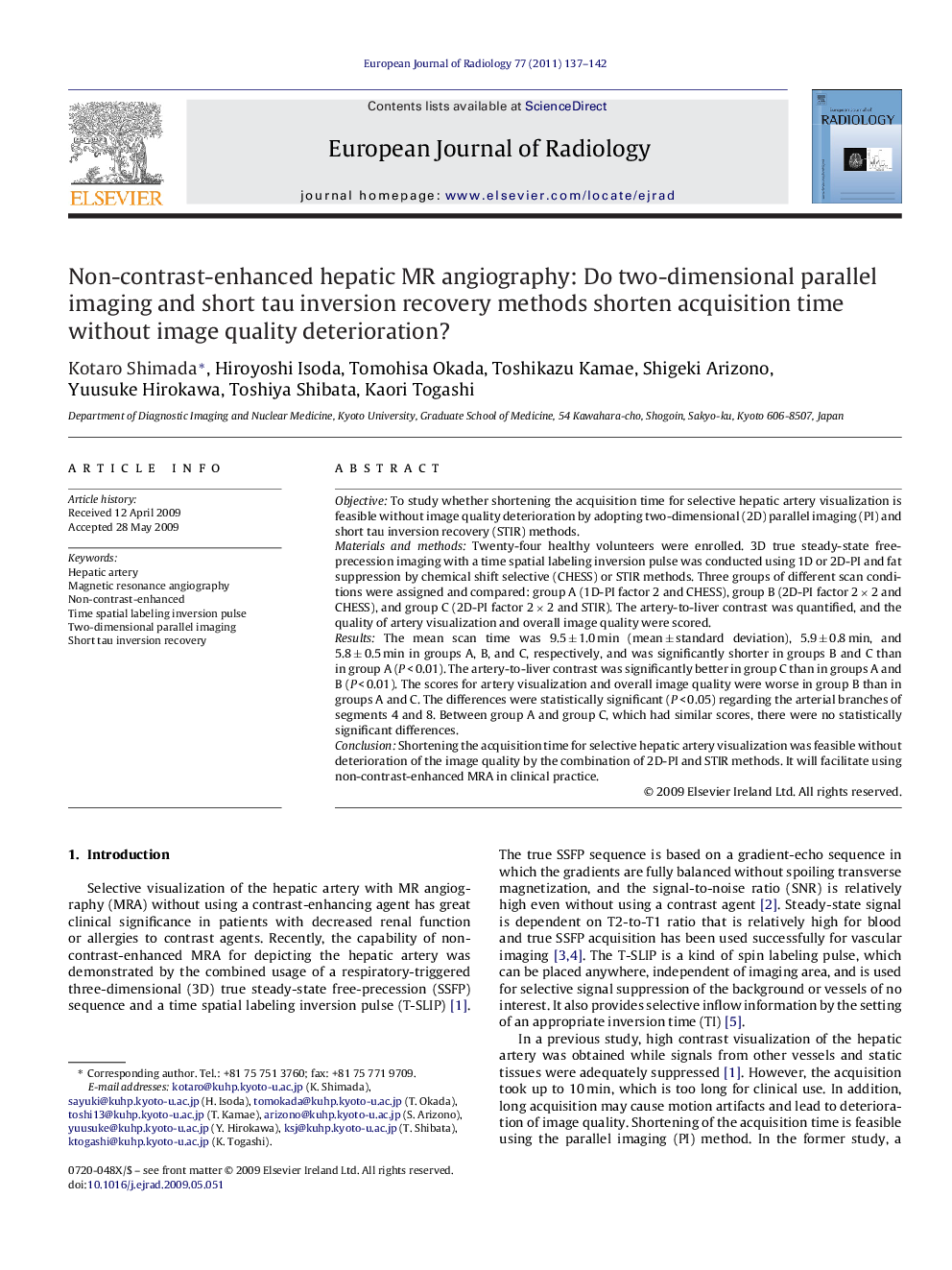| Article ID | Journal | Published Year | Pages | File Type |
|---|---|---|---|---|
| 4227365 | European Journal of Radiology | 2011 | 6 Pages |
ObjectiveTo study whether shortening the acquisition time for selective hepatic artery visualization is feasible without image quality deterioration by adopting two-dimensional (2D) parallel imaging (PI) and short tau inversion recovery (STIR) methods.Materials and methodsTwenty-four healthy volunteers were enrolled. 3D true steady-state free-precession imaging with a time spatial labeling inversion pulse was conducted using 1D or 2D-PI and fat suppression by chemical shift selective (CHESS) or STIR methods. Three groups of different scan conditions were assigned and compared: group A (1D-PI factor 2 and CHESS), group B (2D-PI factor 2 × 2 and CHESS), and group C (2D-PI factor 2 × 2 and STIR). The artery-to-liver contrast was quantified, and the quality of artery visualization and overall image quality were scored.ResultsThe mean scan time was 9.5 ± 1.0 min (mean ± standard deviation), 5.9 ± 0.8 min, and 5.8 ± 0.5 min in groups A, B, and C, respectively, and was significantly shorter in groups B and C than in group A (P < 0.01). The artery-to-liver contrast was significantly better in group C than in groups A and B (P < 0.01). The scores for artery visualization and overall image quality were worse in group B than in groups A and C. The differences were statistically significant (P < 0.05) regarding the arterial branches of segments 4 and 8. Between group A and group C, which had similar scores, there were no statistically significant differences.ConclusionShortening the acquisition time for selective hepatic artery visualization was feasible without deterioration of the image quality by the combination of 2D-PI and STIR methods. It will facilitate using non-contrast-enhanced MRA in clinical practice.
